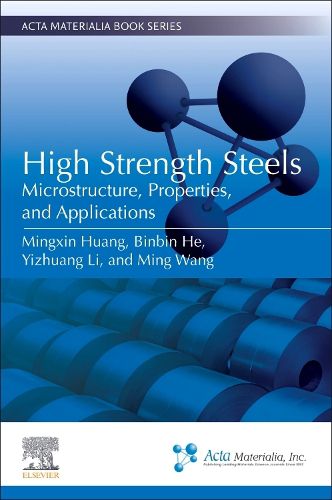Readings Newsletter
Become a Readings Member to make your shopping experience even easier.
Sign in or sign up for free!
You’re not far away from qualifying for FREE standard shipping within Australia
You’ve qualified for FREE standard shipping within Australia
The cart is loading…






High Strength Steels: Microstructure, Properties, and Applications summarizes the historical context and recent research directions of new high strength steels including high-strength low alloyed steel (HSLA), dual-phase (DP) steel, transformation-induced plasticity (TRIP) assisted steel, quenching and partitioning (Q&P) steel, medium-Mn steel, high-Mn twinning induced plasticity (TWIP) steel, bainitic steel, martensitic steel and maraging steel. In particular, the state-of-the-art understanding of the processing-microstructure-property relationship of these high-strength steels is the focus of this book. More importantly, the authors' understanding on the deformation mechanisms of high-strength steels, which is based on their extensive research works over the last two decades, is thoroughly incorporated. Engineering applications of these materials are also discussed.
High Strength Steels is suitable for new entrants or those working in related fields in academia and R&D in the subject areas of materials science and engineering and metallurgy.
$9.00 standard shipping within Australia
FREE standard shipping within Australia for orders over $100.00
Express & International shipping calculated at checkout
High Strength Steels: Microstructure, Properties, and Applications summarizes the historical context and recent research directions of new high strength steels including high-strength low alloyed steel (HSLA), dual-phase (DP) steel, transformation-induced plasticity (TRIP) assisted steel, quenching and partitioning (Q&P) steel, medium-Mn steel, high-Mn twinning induced plasticity (TWIP) steel, bainitic steel, martensitic steel and maraging steel. In particular, the state-of-the-art understanding of the processing-microstructure-property relationship of these high-strength steels is the focus of this book. More importantly, the authors' understanding on the deformation mechanisms of high-strength steels, which is based on their extensive research works over the last two decades, is thoroughly incorporated. Engineering applications of these materials are also discussed.
High Strength Steels is suitable for new entrants or those working in related fields in academia and R&D in the subject areas of materials science and engineering and metallurgy.